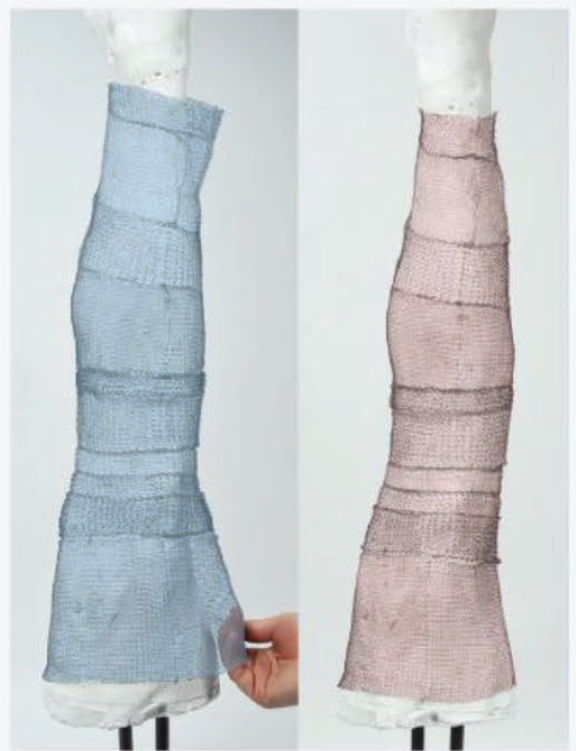Treating Chronic Venous Insufficiency with New Compression Garment
Approximately 40% of people in the U.S. suffer from chronic venous insufficiency (CVI), which is a condition that occurs when the venous wall and/or valves in the leg veins are not working effectively, making it difficult for blood to return to the heart from the legs. This condition typically occurs during pregnancy or among people with heart disease, end-stage liver disease or old age. But, an estimated six percent of the U.S. population suffers from advanced CVI that impairs quality of life and can lead to hospitalization—even death. One University of Minnesota Medical School faculty member, Surbhi Shah, MD, is working with others at the University to provide a novel solution.
“One of the ways CVI can be effectively managed is through the use of elastic compression stockings that help prevent the pooling of blood in the affected area. However, between 30 and 65% of patients do not follow the treatment plan due to difficulty of wearing the current compression garments that are found within the marketplace,” said Dr. Shah, assistant professor in the Department of Medicine’s Division of Hematology, Oncology and Transplantation. “Unfortunately, the non-compliance with this therapy can lead to reduced quality of life and increased healthcare costs, costing between $150 million and $1 billion annually in direct medical expenditures in the U.S.”

Recognizing the need for patients with CVI to be compliant in wearing compression garments, Dr. Shah partnered with Brad Holschuh, PhD, assistant professor in the College of Design, to create a new compression garment, called Smart Garments.
“It’s a funny story how we got started. Dr. Holschuh and I are next door neighbors. We were in the backyard with our kids when we were talking about what we both do at the University,” Dr. Shah explained. “When I was talking with him, some of the work he has done already pertains to incorporating compression garments in space suits for astronauts to help them maintain the blood pressure in the anti-gravity environment.”
There are several other compression stockings out in the market already, however, patients struggle to wear them due to the intense pressure the garments provide, especially for patients with a larger amount of swelling. Dr. Shah’s Smart Garments would be easier to wear, making it more likely for patients to follow the treatment recommendation and better manage CVI.
“The Smart Garments will improve the swelling in the legs as would any other compression garment, but the biggest benefit from this novel approach would be improving the compliance or the willingness for a patient to put the garment on and receive maximum benefit out of it,” Dr. Shah said.
Drs. Shah and Holschuh began their research to explore if this opportunity could become a reality, applying for the Office of Academic Clinical Affairs’ (OACA) Faculty Research Development Grant Program. They received the grant in January.
“The first goal is to create the garment, then test it with healthy volunteers to obtain experiential data. For example, five people would put on the Smart Garment and answer a questionnaire regarding variables, such as what was the ease, how did they feel about the pressure, etc.,” Dr. Shah explained. “These would be healthy participants who would be gauging the efficiency and ease of putting these garments on in comparison to currently available options.”
Dr. Shah says the OACA grant is helping them tweak the garments to make them as ideal as possible for patients suffering from CVI, before entering the next phase of actually testing the garments on patients with CVI. The duo hopes to revolutionize this treatment option for patients with CVI, reduce the number of patients with advanced CVI and help improve healthcare costs.
“There is a long-term effect of long-term swelling in legs. CVI leads to break down of blood cells releasing pigments that can irritate the skin and can cause ulcers, which can be devastating for both their quality of life as well as serious medical complications including life threatening infections,” said Dr. Shah. “Our goal is to help alleviate all of that.”